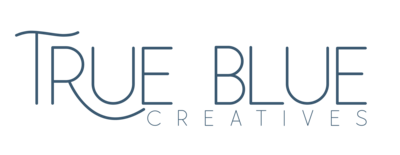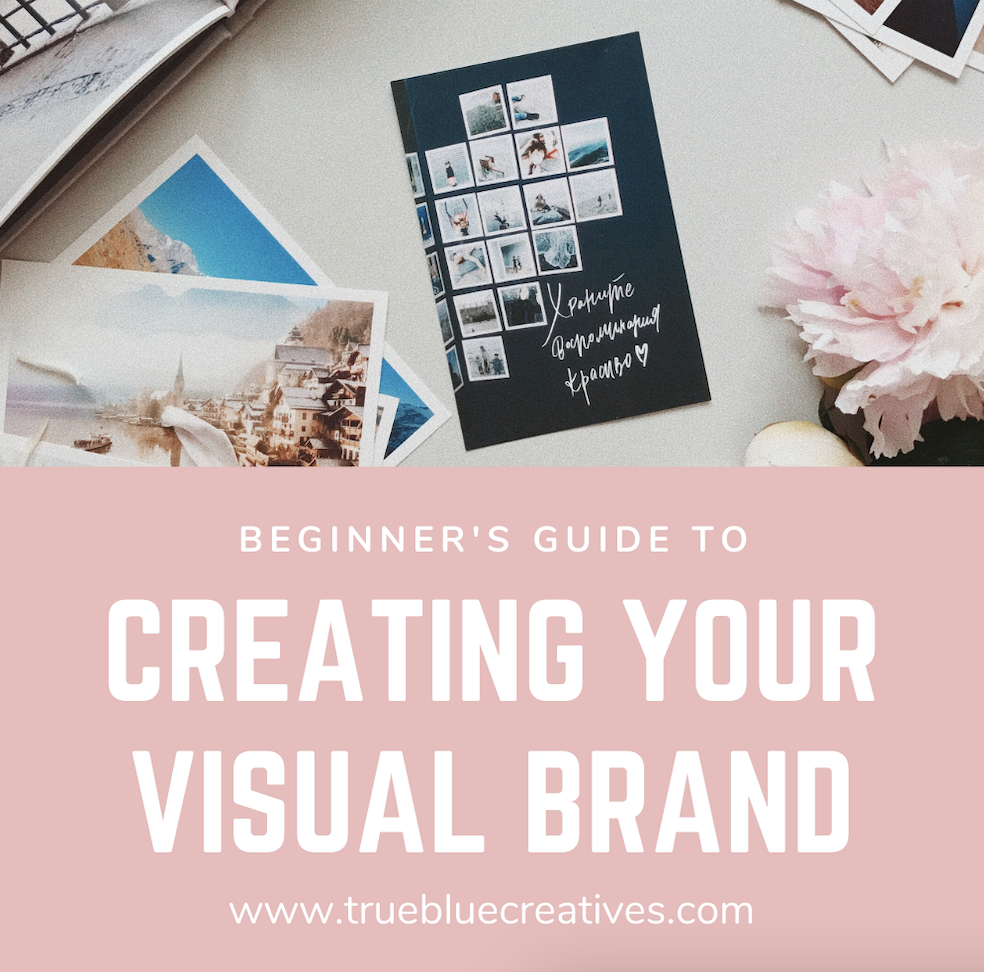Your business’s visual brand is so much more than your logo. Although your logo is a big part of your identity and often the first thing customers see, there are several elements to keep in mind to consistently brand your content. Below is a list of items you should be sure to include in your branding guidelines.
Company Values
When creating my business’s brands, the first thing I always do is create a list of values I want my business to represent. For True Blue Creatives, my list looked a little something like this:
- Approachable
- Reliable
- Youthful
- High-quality
- Forward-thinking
I wrote down everything that came to mind and then went through and reflected on each word I wrote. After much deliberation, I narrowed it down to a handful of words that I wanted to represent the core of my business.
Color Palette
As a designer by heart, this is my favorite part of the branding experience. Your brand’s color palette will be part of your logo, website, and every piece of content you make, so it’s important to get it right. Most color palettes consist of five key colors: bold, complimentary, neutral, dark, and light.
There are a couple starting points for your color palette, but the two I use most often are based on name association and values association.
If you already know the name of your business, it may come with an obvious choice of colors. For example, let’s say you’re opening a sustainable store named “Greene”. The most obvious choice for your bold color is right in the name — green!
The less obvious route would be choosing colors associated with your values. We all know that many colors have underlying meanings. For example, purple represents royalty and luxury while yellow represents freshness and positivity.
When creating True Blue Creatives, I actually worked backwards when picking a color palette. The first thing I started with was choosing my values. I had no idea what I wanted to name my store or what I wanted the brand to look like, but I knew I wanted it to be a brand people could rely on. I then found out that the color blue represents trust, loyalty, and confidence — all things that I believe come along with reliability. From there, I chose my name — True Blue Creatives.
Once you pick your bold color, I highly recommend using programs to help find your remaining complementary colors. My personal favorite is Coolors.co. You can pull colors from a photo or randomly generate color palettes until you find one that suits you!
Fonts
Just like the color palette, the fonts you choose will be seen on every piece of content you create moving forward, so it’s important to choose ones that represent your brand. Believe it or not, different fonts do represent different meanings the same way colors do.
For example sans serif fonts often represent modern, youthful companies. You’ll see a lot of this font used in tech companies (ex: Apple). Serif fonts on the hand symbolize tradition and sophistication. You’ll often see this font used among established institutions like universities and nonprofit organizations.
You’ll want to select a primary font and secondary font. The primary font will be used in all of your headings and subheadings, while your secondary font will be paragraph text and captions. Don’t be afraid to mix and match serif fonts with sans serif fonts to balance out your brand. I often use Fontpair.co to help me find the perfect pairing.
Tone — AKA Brand Persona
This is where your brand’s personality really shines. Your brand’s tone is the approach and voice you use in your messaging. For example, the fast-food restaurant Wendy’s has taken a sarcastic and funny tone on social media through its Twitter roasts in order to appeal to younger generations.
When choosing your tone, it’s important to keep in mind the goal of your business and your company’s buyer persona. If you’re a brand that depends on building people’s trust, for example the healthcare field, you’ll want your tone to be intelligent and serious. However, if your typical customer is a 25-year old woman, you can take a more hip and modern approach.
Your tagline should follow your brand’s tone, but the best place to showcase your tone should be through social media. Through your captions, comment replies, and more, your customer’s will begin to see the personality behind your brand rather than another monotone company.
It can be difficult thinking outside the box when creating your brand identity. It’s helpful to hire professional designers and copywriters that can help turn your vision into reality.



